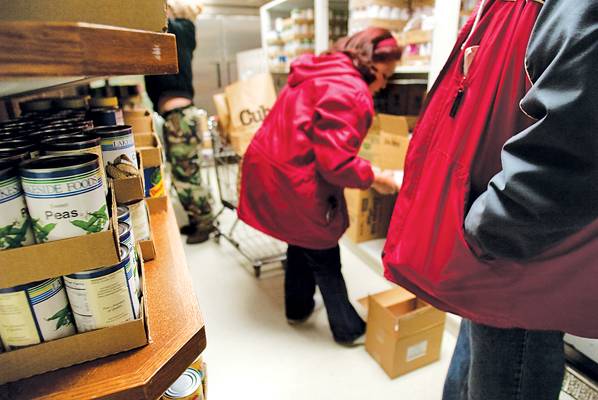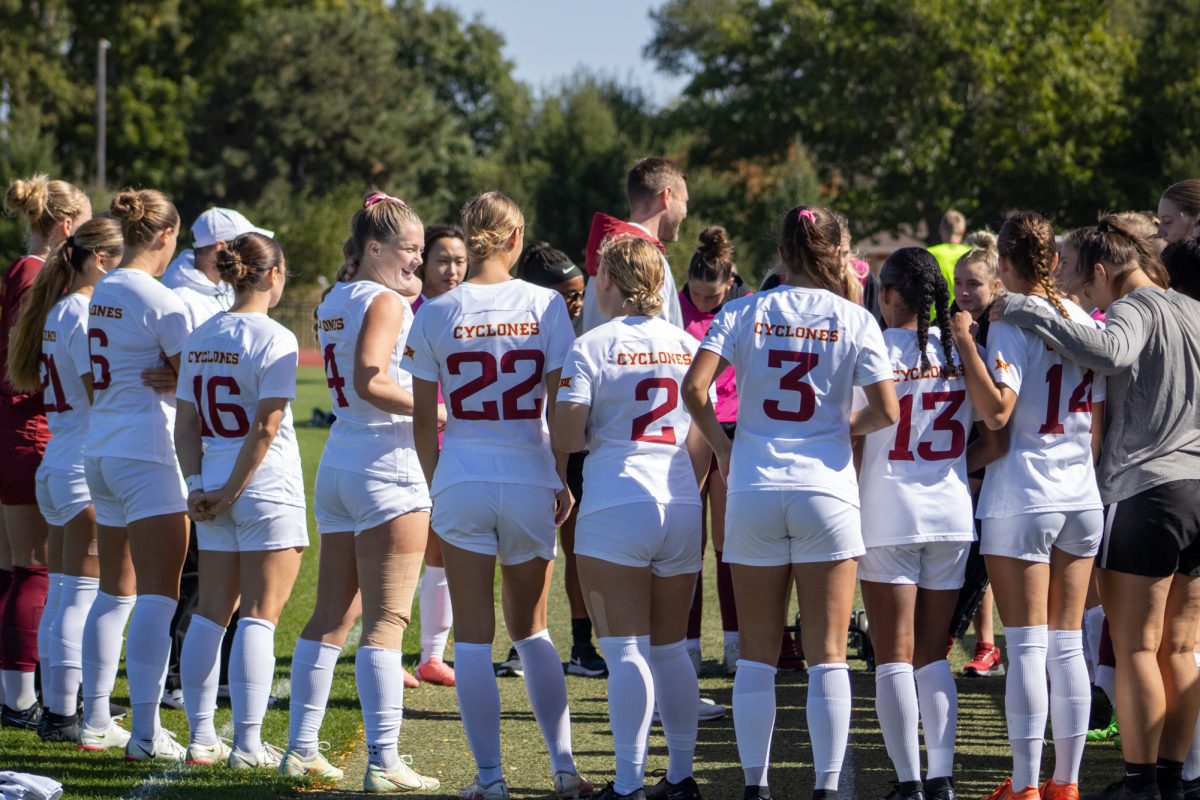‘Pockets’ of poverty in Iowa

Ames residents seeking aid pick out food from the Bethesda Lutheran Church Food Pantry on Tuesday night at 1517 Northwestern Ave in Ames. The pantry distributes food by weight to residents in need. Photo: Laurel Scott/Iowa State Daily
February 3, 2009
Approximately one in seven people living in Story County live in poverty.
Using numbers from the 2006 US Census Bureau, this means approximately 11,449 of the 80,145 residents in Story County live in poverty.
David Peters, assistant professor of sociology, recently published a paper that discussed the geography of American poverty over time.
Peters’ paper, “Typology of American Poverty”, was published in the January edition of the International Regional Science Review.
In order to write his paper, Peters said he “crunched” US Census Bureau data from 1980, 1990 and 2000 and looked at approximately 40,000 communities across the United States.
He said he was interested in looking at “local level poverty” at the county level.
“Even an analysis at the county level makes small, poor places statistically invisible,” he said.
“So I wanted to see within the county if are areas of wealth and areas of poverty within the same area.”
Peters said he divided the counties into several groups.
In terms of poverty, Peters identified three main groups of poverty: high poverty, advancing high poverty and declining poverty.
High poverty areas were communities or places that had persistently high poverty over the last 20 years, he said.
Advancing high poverty were areas that moved into high poverty.
This means that communities were in low poverty in the 1980s and by 2000 they advanced into the high poverty group.
The third and final main group was the declining high poverty group.
This means that communities were high in poverty in 1980 and had moved out of poverty by 2000.
Peters cited an example of using these groups to identify where problems of poverty exist.
“Story County, for example, the city of Ames, was classified as an advancing high poverty,” he said.
“So in 1980, Ames had a poverty rate that was only about five percent above the national average… a little bit above average.
“However by 2000, it had risen to about 14 percent above the U.S. average. So we’re talking about a poverty rate going basically from 15 percent to nearly 28 percent above the national average. While nationally the poverty rates declined from 1980 to 2000, the poverty rate in Ames increased. So as the rest of the county kind of reduced poverty overall, Ames didn’t see that trend.”
Vic Moss, executive director of the Emergency Residence Project in Ames, said Ames is still struggling in its fight against poverty.
The one-in-seven statistic of people in poverty, Moss said, is inaccurate. He thinks the number is too low.
“It’s not even close,” Moss said.
“[The guidelines are] so outdated that it’s really meaningless; it’s based on system devised in the 1950s.”
Moss said a one-in-four or one-in-five statistic is more realistic.
As the director of the project, Moss said he deals with families and individuals who are homeless or who are facing eviction on a regular basis.
Last Sunday, Moss said, the homeless shelter was filled with 50 people.
Short-term and long-term housing is available at the project’s location at 225 South Kellogg Ave.
Moss said a short-term residence is available to adults, couples and families for a term of two weeks or fewer.
A long-term residence is an option for families only, Moss said.
He said families are allowed to stay for a year or more, depending on how long it takes for the family to get into affordable housing.
Moss said the shelter houses close to 500 per year through short-term residency and about 50 per year through the long-term option.
This year, Moss said he doesn’t expect the numbers to change much.
“They don’t really reflect the need, they reflect the capacity,” Moss said.
He said most of the time spent throughout the year is homeless prevention.
Moss said about 1,500 residents are facing eviction or forced utility shutoff.
He said this process requires Moss to work with utility companies to prevent the shutoffs and evictions.
“It’s very expensive because we don’t get discounts,” he said.
“Our concerns are that we don’t have the room and that we’ll run out of money. The problem is growing faster than we are.”
Moss said the higher rates of crime in Ames over the past year could be partially attributed to the local poverty problem.
“I wish that people could see more of a sense of urgency… there was more crime over the past year,” he said.
“Some people blame it on the influx of people coming into the city but I think it’s about the lack of opportunities elsewhere too.
“I think we’re getting more of a taste of what other states and cities have been dealing with for years.”
However, Peters disagrees.
He said the one-in-seven rate “is probably a little high” because college students may have been included in the one-in-seven statistic.
College students, he said, are considered to be in “short-term poverty.”
He said although they may go to school full-time and work part-time, they have a better chance of improving their status.
Ames resources for help
Food at First
525-232-2750
Meals served at First United Methodist Church
516 Kellogg Ave.
Beyond Welfare
515-292-5992
Dedicated to engaging the community in eliminating household and systemic poverty in Story County, and making the community safer and more welcoming for children and families.
Emergency Residence Project
515-232-8075
Provides an emergency shelter and meals to temporarily assist homeless families and single adults.
Mid-Iowa Community Action, Inc.
515-232-9020 or 515-956-3333
Provides services to low income people including family development, food pantry, energy assistance, Head Start, WIC, dental clinic, maternal health, and children’s medical and dental vouchers.
Bethesda Community Food Pantry
515-232-6256
Food available at Bethesda Lutheran Church
1517 Northwestern Ave.
*Information courtesy of the United Way of Story County Web site






